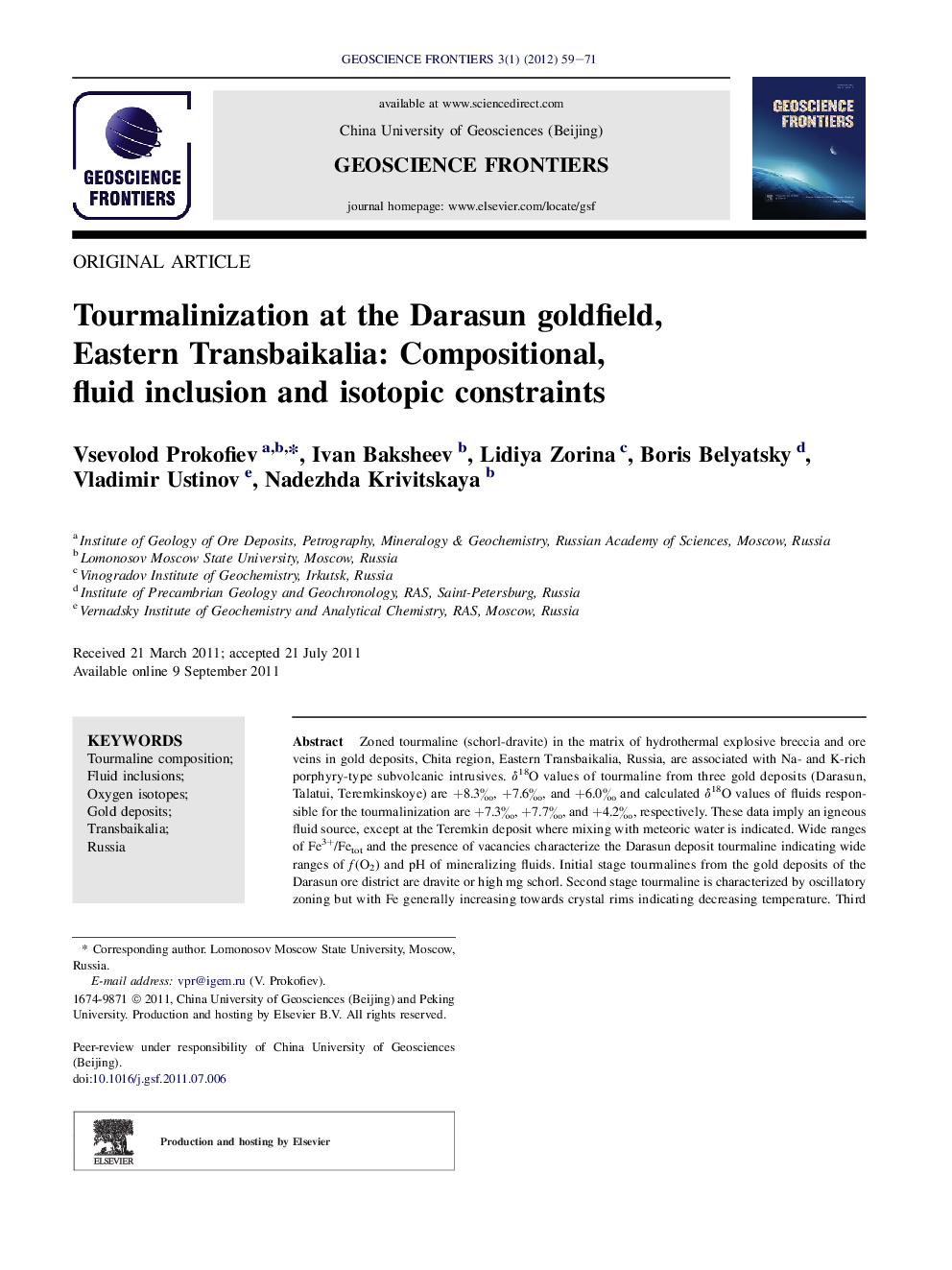| Article ID | Journal | Published Year | Pages | File Type |
|---|---|---|---|---|
| 4681897 | Geoscience Frontiers | 2012 | 13 Pages |
Zoned tourmaline (schorl-dravite) in the matrix of hydrothermal explosive breccia and ore veins in gold deposits, Chita region, Eastern Transbaikalia, Russia, are associated with Na- and K-rich porphyry-type subvolcanic intrusives. δ18O values of tourmaline from three gold deposits (Darasun, Talatui, Teremkinskoye) are +8.3‰, +7.6‰, and +6.0‰ and calculated δ18O values of fluids responsible for the tourmalinization are +7.3‰, +7.7‰, and +4.2‰, respectively. These data imply an igneous fluid source, except at the Teremkin deposit where mixing with meteoric water is indicated. Wide ranges of Fe3+/Fetot and the presence of vacancies characterize the Darasun deposit tourmaline indicating wide ranges of ƒ(O2) and pH of mineralizing fluids. Initial stage tourmalines from the gold deposits of the Darasun ore district are dravite or high mg schorl. Second stage tourmaline is characterized by oscillatory zoning but with Fe generally increasing towards crystal rims indicating decreasing temperature. Third stage tourmaline formed unzoned crystals with xMg (mole fraction of Mg) close to that of the first stage tourmaline, due to a close association with pyrite and arsenopyrite. From Fe3+/Fetot values, chemical composition and crystallization temperatures, logf(O2) of mineralizing fluids ranged from ca. −25 to −20, much higher than for the gold-bearing beresite–listvenite association, indicating that tourmalinization was not related to gold mineralization.
